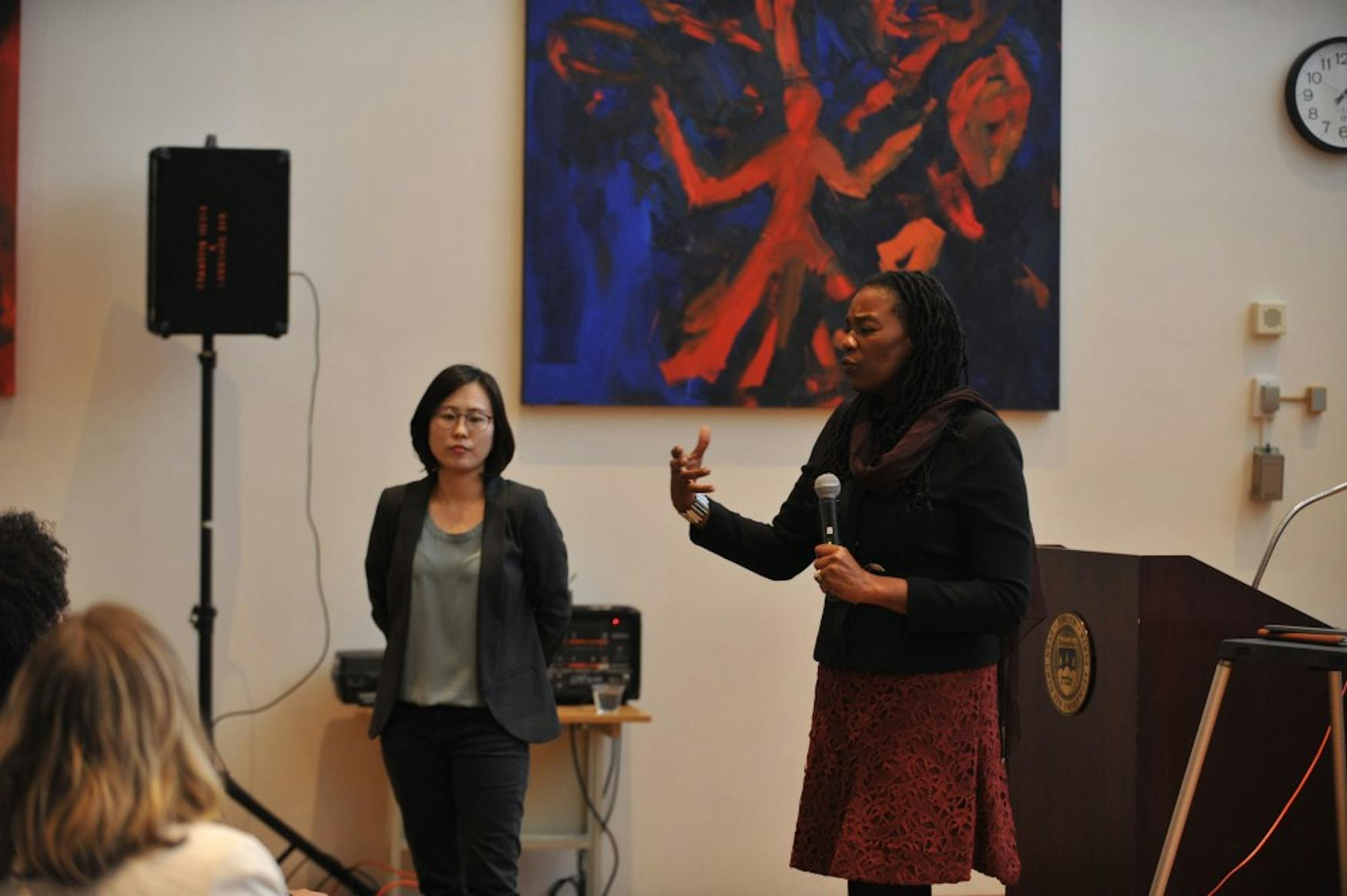The Fault in Our Perceptions
Two researchers spoke about how perceptions affect behavior
Director for the Laboratory of Intergroup Relations and the Social Mind Dr. Valerie Purdie Greenaway, and cultural neuroscientist Jiyoung Park came to Brandeis on Thursday to present on what seemed to be two starkly different topics: one about racism, the other about self perception. However, as the audience in the Rapaporte Treasure Hall soon learned, things aren’t always as they appear.
Greenway, whose research is titled, “Inverted Influence: Blacks, whites, and difficult conversations about race,” took up the microphone. She first described the difference between implicit motivation and implicit power. Implicit motivations energize us, orient us to new situations and are the subconscious drivers of our motivations. Implicit power, on the other hand, is the driver of unconscious motivation within us and manifests itself in such a way that we are inspired to influence others. Both are important concepts that are central to Greenway’s research.
Greenway gave her lab participants a test to determine who had low implicit power and who had high implicit power. Then, with the support of her lab, she ran three experiments. The first experiment measured the implicit power of Black Americans. She created a 12-minute video with a “context opportunity for Black people to engage and influence others.” To do this, she had a control group, in which Black people watched a clip about the Swiss Alps region from Planet Earth. She believed there was no place to “motivate arousal” through this film. The experimental group, however, watched a clip about slavery, clearly with the intent to create some emotional response. She then had all the participants who watched these clips write letters to white people. These letters were then coded by professionals and scanned for words that evoke feelings of agency, affiliation and concern for impact and achievement. This experiment concluded that the group shown the control clip had no significant correlation between low or high implicit power and low or high number of affiliation expressions. However, to those who were shown the slavery clip, participants with high levels of implicit power were much more likely to use an affiliation strategy (concern about relationships, creating a social bond more powerful than color differences) in their letters. This is only one experiment, so other alternative explanations could be empathy, racial identity, extroversion of the writer, or perspective.
In Greenway’s next experiment, she performed the test again with white Americans, except she measured three additional responses: self-reported receptivity to messages in letters, implicit anxiety and the ability to recall Black historical figures. After these participants watched their control or experimental video clips, they were then given the letter written by one of the Black Americans who watched the same video previously. She found that white Americans who received a letter written by someone with high affiliation, regardless of which video group they were a part of, were not only more easily able to recall Black historical figures but also reported less anxiety after reading the letter.
The final experiment conducted involved putting Black and white Americans in a room to discuss how slavery is taught in schools. First, people from each racial group were split up and watched either the Planet Earth clip or the clip about slavery. In discussion sections, the results of those talks were white and Black Americans speaking about affirmative action using phrases like “let’s work on this together.” Greenway found that people with high implicit power felt more comfortable speaking openly and engaging in an open dialogue with people of other races. What this means for the future is still unclear. However, its implications suggest that people who are motivated to help the world are more likely to work with people different from themselves.
Park, a cultural neuroscientist who runs a lab at University of Texas at Dallas, spoke after Greenway. She studies emotional cues — how they affect people’s initial reactions, how that then influences experiences, and in turn, how all of these affect health. She studies variations between cultures as well as disparities within them. Her biggest research question and the one on which she presented, is: Does culture modulate such early, automatic processing of threat? Her research focused specifically on social evaluative threats. Through experimentation using a computer program that detected face priming, she found that there are adverse psychological and physiological consequences to experiencing any social threat on a regular basis. Obviously, not all individuals are equally sensitive. She found that interdependent people are more at risk since they have a higher sensitivity to people’s perceptions of them. Perhaps her most interesting discovery is that these values of sensitivity and perceived threats vary vastly depending on where the participant is from.
As women working in STEM, Greenway and Park find themselves in a field largely dominated by men. While they pointed to the importance of bringing more women into STEM, the primary point of their presentations was to demonstrate that, when society is looked at under a critical and scientific light, discoveries can arise that challenge our perceptions of reality and force us to take responsibility for our beliefs.




Please note All comments are eligible for publication in The Justice.